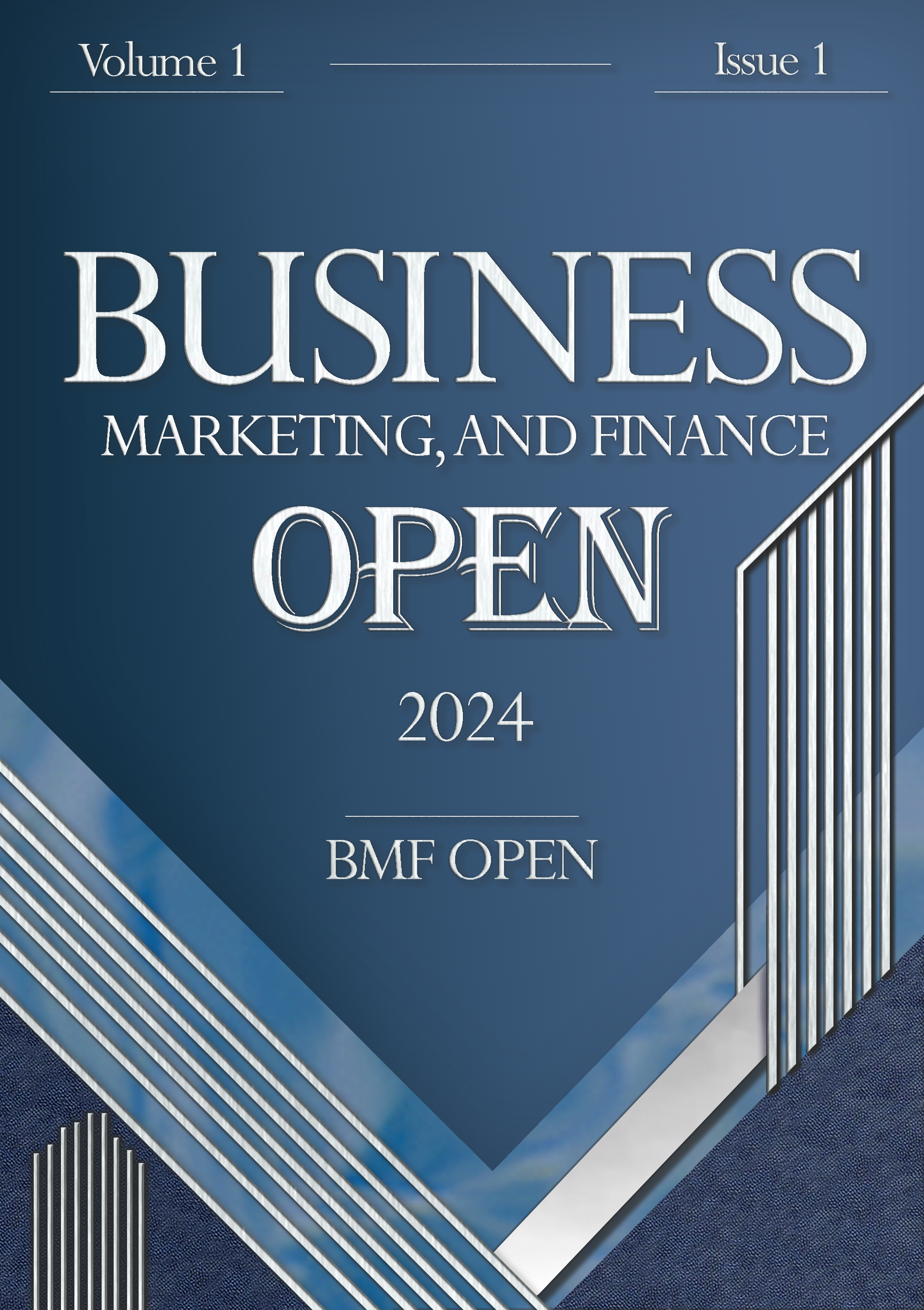Examining the Effect of Parallel Market Volatility and Deposit Breakage Rates on Long-Term Bank Deposits with the Aim of Estimating the Optimal Investment Portfolio
Keywords:
deposit breakage rate, investor risk tolerance, long-term deposits, parallel financial markets, CVaR modelAbstract
In recent decades, the role of the banking system in channeling financial resources toward productive activities and supporting the economic stability of countries has received increasing attention. One of the most important policy instruments in this regard is the breakage rate of long-term deposits, which reduces the interest payable to depositors when withdrawals occur before maturity. The main objective of this study is to examine the impact of bank deposit breakage rates on investor behavior in Iran, with an emphasis on the influence of parallel financial markets such as foreign exchange, gold, real estate, and the stock market. In this context, quarterly macroeconomic data of Iran for the period 2009 to 2019 were used, and the Conditional Value-at-Risk Vector Autoregressive (CVaR-VAR) model was employed to analyze the relationships among variables. To better understand dynamic interactions, variance decomposition analysis, impulse response functions, and the Granger causality test were applied. The findings indicate that changes in deposit breakage rates have a significant effect on the volume of bank deposits, and investors, when confronted with profitable opportunities in parallel markets, exhibit notable reactions to breakage rates. In addition, the results show that markets such as gold and foreign exchange exert a stronger influence in stimulating the withdrawal of long-term deposits compared with other markets, and their volatility can affect deposit levels. Based on the findings, implementing targeted and dynamic breakage rates—considering economic conditions and investors’ risk tolerance—can serve as an effective tool for controlling liquidity and preventing turbulence in parallel markets.
References
I. Drechsler, A. Savov, and P. Schnabl, "Banking on deposits: Maturity transformation without interest rate risk," The Journal of Finance, vol. 76, no. 3, pp. 1091-1143, 2021, doi: 10.1111/jofi.13013.
M. Abduh, M. A. Omar, and J. Duasa, "The impact of crisis and macroeconomic variables towards Islamic banking deposits," American Journal of Applied Sciences, vol. 8, no. 12, pp. 1413-1418, 2011, doi: 10.3844/ajassp.2011.1413.1418.
V. V. Acharya, D. Gromb, and T. Yorulmazer, "Imperfect competition in the interbank market for liquidity as a rationale for central banking," American Economic Journal: Macroeconomics, vol. 4, no. 2, pp. 184-217, 2012, doi: 10.1257/mac.4.2.184.
L. Laeven and F. Valencia, "Systemic banking crises database II," IMF Economic Review, vol. 68, no. 2, pp. 307-361, 2020, doi: 10.1057/s41308-020-00107-3.
A. Tooze, Crashed: How a decade of financial crises changed the world. Penguin, 2018.
M. Pourabdollahian Kouyich, H. Asgharpour, F. Fallahi, and H. Sattar Rostami, "Measuring the Fragility of the Iranian Banking System Based on the BSFI Index," Financial Economics Quarterly, vol. 12, no. 45, pp. 1-26, 2018.
D. Anginer, A. Demirguc-Kunt, and M. Zhu, "How does competition affect bank systemic risk?," Journal of financial Intermediation, vol. 23, no. 1, pp. 1-26, 2014, doi: 10.1016/j.jfi.2013.11.001.
A. Y. Saif-Alyousfi, A. Saha, and R. Md-Rus, "The impact of bank competition and concentration on bank risk-taking behavior and stability: Evidence from GCC countries," The north American journal of economics and finance, vol. 51, p. 100867, 2020, doi: 10.1016/j.najef.2018.10.015.
M. Hussain and U. Bashir, "Risk-competition nexus: Evidence from Chinese banking industry," Asia Pacific Management Review, vol. 25, no. 1, pp. 23-37, 2020, doi: 10.1016/j.apmrv.2019.06.001.
W. Azmi, M. Ali, S. Arshad, and S. A. R. Rizvi, "Intricacies of competition, stability, and diversification: Evidence from dual banking economies," Economic Modelling, vol. 83, pp. 111-126, 2019, doi: 10.1016/j.econmod.2019.02.002.
M. Albaity, R. S. Mallek, H. A. Hassan Al‐Tamimi, and A. H. M. Noman, "Does competition lead to financial stability or financial fragility for Islamic and conventional banks? Evidence from the GCC countries," International Journal of Finance & Economics, vol. 26, no. 3, pp. 4706-4722, 2021, doi: 10.1002/ijfe.2037.
N. Arshed and R. Kalim, "Modelling demand and supply of Islamic banking deposits," International Journal of Finance & Economics, vol. 26, no. 2, pp. 2813-2831, 2021, doi: 10.1002/ijfe.1936.
H. J. Kiss, I. Rodriguez-Lara, and A. Rosa-Garcia, "Who withdraws first? Line formation during bank runs," Journal of Banking & Finance, vol. 140, p. 106491, 2022, doi: 10.1016/j.jbankfin.2022.106491.
A. Bayona and O. Peia, "Financial contagion and the wealth effect: An experimental study," Journal of Economic Behavior & Organization, vol. 200, pp. 1184-1202, 2022, doi: 10.1016/j.jebo.2020.08.001.
N. Artavanis, D. Paravisini, C. Robles-Garcia, A. Seru, and M. Tsoutsoura, "Deposit withdrawals," 2019.
F. Rahnama Roudposhti, M. Dadfar, H. Nikoumaram, and M. Fallah Shams, "Investigating Contagion Between Monetary and Financial Markets in Iran," Economics and Modeling Quarterly, vol. 12, no. 2, pp. 123-166, 2021.
M. Fallah Shams, M. Ma'dan Chi, A. Qeighobadi, and S. Wahabzadeh, "Contagion of Systemic Risk in Iran's Financial Markets," Scientific Research Quarterly of Investment Knowledge, vol. 11, no. 41, 2022.
A. K. Tiwari, N. Trabelsi, F. Alqahtani, and I. D. Raheem, "Systemic risk spillovers between crude oil and stock index returns of G7 economies: Conditional value-at-risk and marginal expected shortfall approaches," Energy Economics, vol. 86, p. 104646, 2020, doi: 10.1016/j.eneco.2019.104646.
B. Wu, D. Huang, and M. Chen, "The Global Stock Network Connected and Resonance Effect Based on the Time-zone VAR Model with LASSO," SSRN Electron. J, vol. 10, 2019, doi: 10.2139/ssrn.3491596.
K. Yin, Z. Liu, and X. Jin, "Interindustry volatility spillover effects in China's stock market," Physica A: Statistical Mechanics and its Applications, vol. 539, p. 122936, 2020, doi: 10.1016/j.physa.2019.122936.
R. Argento, V. L. Bryant, and J. Sabelhaus, "Early withdrawals from retirement accounts during the great recession," Contemporary Economic Policy, vol. 33, no. 1, pp. 1-16, 2015, doi: 10.1111/coep.12064.
J. Beshears, J. J. Choi, C. Harris, D. Laibson, B. C. Madrian, and J. Sakong, "Which early withdrawal penalty attracts the most deposits to a commitment savings account?," Journal of public economics, vol. 183, p. 104144, 2020, doi: 10.1016/j.jpubeco.2020.104144.
A. John, "When commitment fails: evidence from a field experiment," Management Science, vol. 66, no. 2, pp. 503-529, 2020, doi: 10.1287/mnsc.2018.3236.
S. Atmaca, K. Schoors, and M. Verschelde, "Bank loyalty, social networks and crisis," Journal of Banking & Finance, vol. 112, p. 105269, 2020, doi: 10.1016/j.jbankfin.2017.12.007.
J. Beshears, J. J. Choi, C. Clayton, C. Harris, D. Laibson, and B. C. Madrian, "Optimal illiquidity," Journal of Financial Economics, vol. 165, p. 103996, 2025, doi: 10.1016/j.jfineco.2025.103996.
D. Karlan and L. L. Linden, "Loose knots: Strong versus weak commitments to save for education in Uganda," Journal of Development Economics, vol. 174, p. 103444, 2025, doi: 10.1016/j.jdeveco.2024.103444.
S. Hamilton, G. Liu, J. Miranda-Pinto, and T. Sainsbury, "A $100,000 marshmallow experiment: Withdrawal and spending responses to early retirement-savings access," 2024.
S. Baek, S. K. Mohanty, and M. Glambosky, "COVID-19 and stock market volatility: An industry level analysis," Finance research letters, vol. 37, p. 101748, 2020, doi: 10.1016/j.frl.2020.101748.
M. Chen, N. Li, L. Zheng, D. Huang, and B. Wu, "Dynamic correlation of market connectivity, risk spillover and abnormal volatility in stock price," Physica A: Statistical Mechanics and Its Applications, vol. 587, p. 126506, 2022, doi: 10.1016/j.physa.2021.126506.
D. Yu, D. Huang, L. Chen, and L. Li, "Forecasting dividend growth: The role of adjusted earnings yield," Economic Modelling, vol. 120, p. 106188, 2023, doi: 10.1016/j.econmod.2022.106188.
D. Yu, D. Huang, and L. Chen, "Stock return predictability and cyclical movements in valuation ratios," Journal of Empirical Finance, vol. 72, pp. 36-53, 2023, doi: 10.1016/j.jempfin.2023.02.004.
D. Yu and D. Huang, "Cross-sectional uncertainty and expected stock returns," Journal of Empirical Finance, vol. 72, pp. 321-340, 2023, doi: 10.1016/j.jempfin.2023.04.001.
H. F. Yang, C. L. Liu, and R. Y. Chou, "Bank diversification and systemic risk," The Quarterly Review of Economics and Finance, vol. 77, pp. 311-326, 2020, doi: 10.1016/j.qref.2019.11.003.
L. Lin, "Bank deposits and the stock market," The Review of Financial Studies, vol. 33, no. 6, pp. 2622-2658, 2020, doi: 10.1093/rfs/hhz078.
L. Liu, A. Rafique, N. Abbas, M. Umer Quddoos, M. M. Ahmad, and A. A. Siddiqi, "Systemic risk spillover between the stock market and banking deposits: Evidence from a sustainability perspective in the South Asian countries," Plos One, vol. 19, no. 7, p. e0288310, 2024, doi: 10.1371/journal.pone.0288310.
M. Chen, Y. Wang, B. Wu, and D. Huang, "Dynamic analyses of contagion risk and module evolution on the SSE a-shares market based on minimum information entropy," Entropy, vol. 23, no. 4, p. 434, 2021, doi: 10.3390/e23040434.
D. Huang, Y. Li, X. Wang, and Z. Zhong, "Does the Federal Open Market Committee cycle affect credit risk?," Financial Management, vol. 51, no. 1, pp. 143-167, 2022, doi: 10.1111/fima.12364.
X. Liu, J. Sun, F. Yang, and J. Wu, "How ownership structure affects bank deposits and loan efficiencies: an empirical analysis of Chinese commercial banks," Annals of Operations Research, vol. 290, pp. 983-1008, 2020, doi: 10.1007/s10479-018-3106-6.
Y. A. Ünvan and I. N. Yakubu, "Do bank-specific factors drive bank deposits in Ghana?," Journal of Computational and Applied Mathematics, vol. 376, p. 112827, 2020, doi: 10.1016/j.cam.2020.112827.
A. Towhidi Nia and H. Nasiri, "Investigating the Feasibility of Paying Fixed Profit to Depositors of Islamic Banks Through Deposit Insurance," Islamic Economics Scientific Quarterly, vol. 21, no. 81, pp. 99-126, 2021.
P. Ja'fari, H. Asaish, M. Kamali, and M. Zahed Gharavi, "Investigating Factors Affecting the Behavior of Legal (Corporate) Bank Customers," Islamic Economics and Banking Scientific Quarterly, no. 49, pp. 75-96, 2024.
Y. Teymouri, F. Tahmasbi, and N. Mehragan, "The Impact of Imposing Deposit Profit Tax on the Volume of Bank Deposits in Iran," Computational Economics Quarterly, vol. 3, no. 1, pp. 23-48, 2023.
H. T. Phan, S. Anwar, W. R. J. Alexander, and H. T. M. Phan, "Competition, efficiency and stability: An empirical study of East Asian commercial banks," The North American Journal of Economics and Finance, vol. 50, p. 100990, 2019, doi: 10.1016/j.najef.2019.100990.
Downloads
Published
Submitted
Revised
Accepted
Issue
Section
License
Copyright (c) 2025 Alireza Abbasian, Seyyed Kazem Chavoshi (Author); Fallah Shams Mir Feiz; Reza Gholami Jamkarani (Author)

This work is licensed under a Creative Commons Attribution-NonCommercial 4.0 International License.






